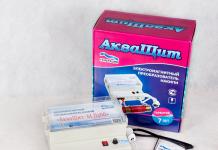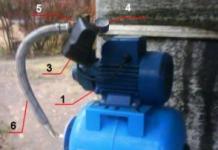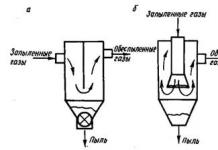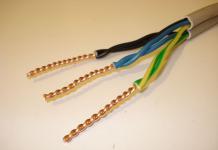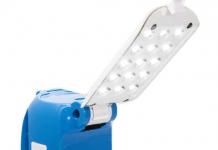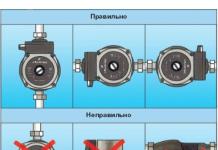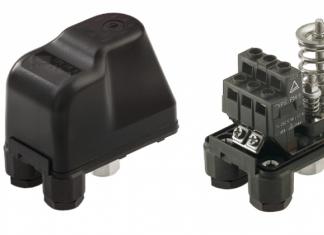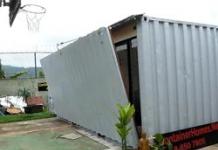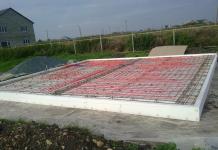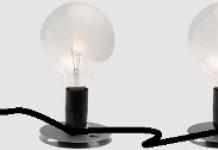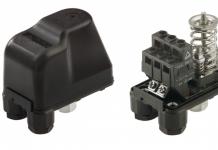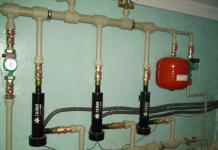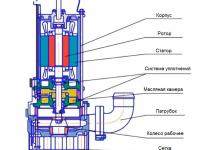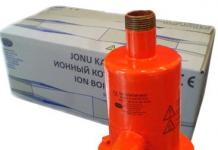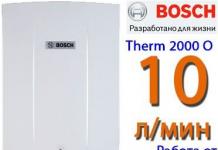In a field such as electricity, all work must be carried out strictly, accurately and without a single mistake. Some people want to figure out such work on their own, not trusting third parties to carry out a responsible mission. Today we will talk about how to properly connect wires in a junction box. The work must be done efficiently, because not only the performance of electrical appliances in the house, but also the fire safety of the premises depends on it.
About the distribution box
In an apartment or house, wires from the electrical panel are routed to different rooms. There are usually several connection points: switch, sockets, and so on. In order for all the wires to be collected in one place, distribution boxes were created. They carry wiring from sockets, switches and are connected in a hollow housing.
So that during repairs you do not have to look for where the wires are hidden in the walls, electrical wiring is laid on the basis of special rules prescribed in the PUE (Electrical Installation Rules).
Distribution boxes are classified according to the type of fastening. So, there are boxes for external installation and internal installation. For the second option, you need to prepare a hole in the wall into which the box will be inserted. As a result, the box lid is located flush with the wall. Often the cover is hidden with wallpaper or plastic during repairs. As a last resort, an outer box is used, which is attached directly to the wall.
There are round or rectangular junction boxes. In any case, there will be at least 4 exits. Each outlet has a fitting or thread to which a corrugated tube is attached. This is done to quickly replace the wire. The old wire is pulled out and new wiring is laid. It is not recommended to lay the cable in a groove on the wall. If the electrical wiring burns out, you will have to dig into the wall and disturb the finish in order to carry out repair work.
What are distribution boxes for?
There are many factors that speak in favor of the existence of junction boxes:
- The power system can be repaired in a matter of hours. All connections are available, you can easily find the area where the wires are burned out. If the cable was laid in special channels (corrugated tube, for example), then in an hour you can replace the failed cable;
- Connections can be inspected at any time. As a rule, wiring problems occur at the connection points. If the socket or switch does not work, but there is voltage in the network, check, first of all, the quality of the connection in the junction box;
- the highest level of fire safety is created. It is believed that dangerous places are connections. Using a box will keep them in one place.
- minimal time and financial costs when repairing wiring. There is no need to look for broken wires in the walls.
Connecting the wires in the box
There are several ways in which conductor connections can be made in junction boxes. Note that there are simple and complex methods, however, if performed correctly, all options will ensure the reliability of the electrical wiring.
Method number 1. Twisting method
It is believed that the twisting method is used by amateurs. At the same time, this is one of the most reliable and proven options. PUE do not recommend the use of twisting, since the contact between the wires is unreliable. As a result, the conductors may overheat, putting the room at risk of fire. However, twisting can be used as a temporary measure, for example when testing an assembled circuit.
Read also:

Experts say that even for a temporary connection of wires, all work must be carried out according to the rules. It is worth noting that regardless of the number of cores in the conductor, the twisting methods are approximately the same. However, there are some differences. If multi-core wires are connected, then you should adhere to the following rules:
— it is necessary to clean the conductor insulation by 4 cm;
— untwist each conductor by 2 centimeters (along the veins);
— a connection is made to the junction of untwisted cores;
— you only need to twist the wires with your fingers;
— ultimately, the twist is tightened using pliers and pliers;
- exposed electrical wires are covered with insulating tape or heat shrink tubing.
It is much easier to use twisting when connecting solid wires. After the conductors have been stripped of insulation, they must be twisted by hand along their entire length. Then, using pliers (2 pieces), the conductors are clamped: with the first pliers at the end of the insulation, and with the second at the end of the connection. We increase the number of turns on the connection with the second pliers. The connected conductors are insulated.
Method number 2. Mounting caps - PPE
Very often, special caps are used for twisting conductors. As a result, it is possible to obtain a reliable connection with good contact. The outer shell of the cap is plastic (the material is not flammable), and inside there is a metal part with a cone-shaped thread. The insert increases the contact surface, improving the electrical parameters of twisting. Most often, thick conductors are connected using caps (no soldering required).

It is necessary to remove the insulation from the wire by 2 centimeters, slightly twist the wires. When the cap is put on, it must be turned with force. At this point the connection can be considered ready.
Before making the connection, you need to count the number of wires. Based on the data obtained (cross-section), a specific type of cap is selected. The advantages of twisting using plastic caps are that you do not need to spend a lot of time, as with conventional twisting. In addition, the connection is compact.
Method No. 3. Connecting conductors by soldering
If you have a soldering iron on your household and you know how to work with it, then the wires can be connected by soldering. Before connecting the wires, they need to be tinned. Soldering flux or rosin is applied to the conductor. Next, the heated tip of the soldering iron is immersed in rosin and passed along the wire several times. A reddish coating should appear.

After the rosin dries, the wires are twisted. Using a soldering iron, tin is taken and the twist is heated until tin flows between the turns. The end result is a high-quality connection with excellent contact. However, electricians are not very fond of using this connection method. The fact is that it takes a lot of time to prepare. However, if you are doing the work for yourself, you should not spare any effort or time.
Method number 4. Welding cores
Using an inverter welding machine, you can connect wires. Welding is used over twisting. You need to set the welding current parameters on the inverter. There are certain standards for different connections:
- conductor with a cross section of 1.5 sq. mm - 30 A;
- conductor with a cross section of 2.5 sq. mm - 50A.

If the conductor is copper, then a graphite electrode is used for welding. Grounding from the welding machine is connected to the upper part of the resulting twist. An electrode is brought from below the twist and an arc is ignited. The electrode is applied to the twist for a couple of seconds. After some time, the connection will cool down, then it can be insulated.
Read also: Hidden electrical wiring in a wooden house
Method number 5. Terminal blocks
Another option for connecting conductors in a box is using terminal blocks. There are several types of pads: screw, with clamps, but the principle of the device is identical. The most common is a block with a copper plate for attaching wires. By inserting several wires into a special connector, they can be reliably connected. Installation using a clamp terminal makes the connection very simple.

In screw terminals, the terminal blocks are placed in a plastic housing. There are open and closed pads. Closed pads are the invention of a new generation. To make a connection, wires are inserted into the socket and clamped with a screw (using a screwdriver).
However, terminal connections have a disadvantage. It lies in the fact that it is inconvenient to connect several conductors together. Contacts are arranged in pairs. And if you need to connect more than three wires, then several branches are squeezed into one socket, which is very difficult. At the same time, such connections make it possible to operate branches with high current consumption.
Another type of pads is Wago terminals. Today, two types of terminals are in demand:
- terminals with a flat-spring mechanism. Sometimes they are called disposable, since it is impossible to reuse the terminals - the quality of the connection deteriorates. Inside the terminal there is a plate with spring petals. As soon as the conductor is inserted (it should only be single-core), the petal is pressed out and the wire is clamped. The conductor cuts into the metal. If you pull out the conductor by force, then the petal will not take its previous shape.

Some terminal connections contain wiring paste inside. This connection is used if you need to connect copper and aluminum wires. The paste protects metals from oxidation, protecting conductors;
- universal terminals with a lever mechanism - this is the best type of connector. The wire, stripped of insulation, is inserted into the terminal and a small lever is clamped. At this point the connection is considered complete. And if you need to reconnect, add contacts, lift the lever and pull out the wire. The pads can be operated at low current (up to 24 A - with a cross-section of 1.5 sq. mm) and at high current (32 A - with a conductor cross-section of 2.5 sq. mm). If wires are connected through which a current higher than that specified will flow, then a different type of connection must be used.
Method number 6. Crimping

The wires in the box can only be connected by crimping using special pliers and a metal sleeve. A sleeve is put on the twist, after which it is clamped with pliers. This method is suitable for connecting conductors with a large load.
Method No. 7. Bolted connection
Connecting multiple wires using bolts is a simple and effective connection method. To complete the work, you need to take a bolt and several washers with a nut.

It is not enough to know how to connect the wires in a junction box. You need to know which conductors are connected to each other. So, a washer is put on the bolt thread. The core is screwed on, the second washer is put on, and then the next core is put on. At the end, put on the third washer and press the connection with a nut. The node is closed with insulation.
There are several advantages of bolted connection of conductors:
- ease of work;
- low cost;
- the ability to connect conductors made of different metals (for example, aluminum and copper).
However, there are also disadvantages:
— fixation of wires is not of high quality;
- to hide the bolt you need to use a lot of insulation;
Content:All work carried out in the field of electrical engineering requires a careful and balanced approach. Each operation must be carried out in strict accordance with technology. Therefore, quite often, novice electricians have a question about how to connect the wires in the junction box.
Purpose and types of distribution boxes
In an apartment or private house, the distribution of electrical networks begins with a panel installed at the entrance. However, as practice shows, each room requires additional distribution of wires due to the presence of several connection points, mainly switches and sockets. All lines drawn to these points are connected in junction boxes. Thus, in addition to a reliable connection, free access to wires and cables is provided for performing various operations.
Depending on the type of installation, distribution boxes can be external or internal, designed for hidden installation. In the second case, a hole is prepared in the wall to the size of the distribution box. After installation, the box cover will be in the same plane with the wall surface. The outer box is fixed to the wall surface and covered with finishing materials, for example, plasterboard.

Junction boxes are usually round or rectangular in shape. They are equipped with four pins, and in some designs there may be more. Each terminal has a thread or fitting for more convenient or plastic pipes where the wires are laid. In the future, this greatly simplifies the replacement of a damaged cable. It is easily disconnected in the box, and then from the switch or outlet and pulled through the pipe. In the same way, a new wire is laid in its place.
Wire connection diagram in junction box


Methods for connecting wires in junction boxes
The connection of cables and wires in junction boxes can be done in different ways. The simplest method, although not entirely reliable, is considered to be ordinary twisting. Due to weak and unreliable contact, overheating and short circuit of the wires may occur. This method is recommended to be used temporarily, for example, to check how the assembled circuit works. However, even with temporary use, it is recommended to follow certain twisting rules.

For stranded wires, the insulation is stripped to approximately 4 cm. The wires are separated from each other by a distance of about 2 cm. The connection is made to the junction of the undivided cores. The conductors are first twisted with fingers, and then the twist should be tightened securely with pliers and insulated with tape or heat shrink tubing. Connecting single-core wires is much easier. They are twisted together over the entire length of the area cleared of insulation.

Special mounting caps are often used for twisting. They provide a more reliable connection, high-quality contact and insulation. Each cap consists of two parts: an outer one - plastic and an inner one, with a metal part in the form of a cone, inside of which there is a thread. This connection allows you to increase the contact area and is excellent for two or more wires. The twisting process itself is very simple. You need to remove the insulation by about 2 cm and lightly twist the connecting ends. Then you need to put a cap on the twist and turn it with force several times so that the wires get inside. The dimensions of the caps are selected in accordance with the cross-section and number of connected conductors.

Soldering is considered one of the most reliable methods. Before connecting the wires, it is necessary to tin them with rosin or a special soldering flux. Then the conductors are twisted, the tin is taken onto a heated soldering iron and the twisting is heated until the molten metal flows between the turns. The connection is completely enveloped, thereby establishing high-quality contact.
If available, the wires can be connected by welding over the entire twisted area. If the cross-section of the core is 1.5 mm2, a current of 30A is required, with a cross-section of 2.5 mm2 - 50A. Welding of copper conductors is performed with graphite electrodes. The ground is carefully connected to the top of the twist, and an electrode is brought to the bottom. After a short touch, an arc appears, producing instant welding. The connection point must cool down, after which it must be insulated.

When connecting wires in a junction box, you must not forget about the terminal blocks. They can be screw or with clamps. The required number of conductors is inserted into a certain place, after which they are securely connected using screws.
Junction box installation
Connection and contacts are one of the important topics in any field related to electric current and voltage. To do this, it is enough to recall a couple of basic dogmas associated with malfunctions, which can be interpreted as follows:
In the place where there should be contact, there is none;
- in a place where it shouldn’t be, it is!
This once again confirms how important it is not only to connect the wires correctly, ensuring an equal cross-section for the passage of current, but how important it is to reliably insulate these connections. In fact, there may be plenty of such options for connecting wires and insulation, they all have their pros and cons, they are all used and applied. This means that we, for our part, must objectively convey to you information about possible wire connections in the junction box of your house or apartment.
Here we will highlight two fundamentally different topics for connecting wires. The first is precisely the provision of mechanical contact, and the second is the schematic diagrams for connecting electrical equipment through distribution boxes, be it switches, lighting devices (chandeliers, lamps). We will start with the first topic, that is, with how you can mechanically connect the wires, but first a little about the wires themselves...
Selecting a wire for connecting it in the junction box (copper, aluminum, number of cores)
To lay wiring in an apartment or house, a wire is used - a monocore made of copper. There are a number of reasons for this choice, which we will discuss in this paragraph. Firstly, why monocore? Yes, because the wiring does not need to bend, and monocores are still a little cheaper than multicore cables. Also, a monocore is not so susceptible to oxidation, because in fact its outer area is much smaller than the sum of the outer areas of a multicore cable. As a result, this feature is able to preserve the useful cross-section of the conductor, which is so important for high currents, much longer.
Now the second aspect. Why is copper used? Today, the rules of the PUE, namely paragraph 7.1.34, dictate the following...
"In buildings, cables and wires with copper conductors should be used..."
This rule came into force in 2001, with the possibility of using the existing reserve. That is, currently all new buildings, be they residential, office or industrial, must be equipped with copper wiring. In 2016, the question was raised about the introduction of aluminum wires with copper additives, which seem to be no worse than pure copper, but this is still in the future. Also, the choice of copper is associated with purely practical aspects. Copper is not so fragile, it can carry much more current than aluminum, and it is excellent at soldering.
Now that we have decided on the wire, we need to select its cross-section. The choice of wire cross-section is important! After all, a wire that is too thin (with a small cross-section) can lead to a fire, and the use of thick wires (with an oversized cross-section) will lead to excess wiring costs. This is not a simple topic. There is no point in developing it in an article about connecting wires. We suggest that you familiarize yourself with this issue from the article “Choosing a wire cross-section based on power (current).”
Now, after you have decided on the type of wire and its cross-section, you can give several ways to connect wires in the wiring of a house or apartment. Most often, such connections are made in a junction box. We won’t tell you anything about the junction boxes themselves. Let's just say that they must be of sufficient volume to accommodate all the connections. It is better to take more “spacious” junction boxes.
How to connect wires in a junction box (twisting)
Electrical Installation Rules (EPI) state that wires must be connected by soldering, welding, bolting, or compression. Wires are twisted, but only as the first step before the next type of permanent connection. This is written in paragraph 2.1.21.
This means that twisting is the most primitive option when you have no other choice, that is, the ability to do welding, soldering, or crimping wires. Although if you remember the times of the USSR, the distribution wires in the distribution wiring were all twisted, and also aluminum.
So, twisting is done as follows. We clean the wires, remove the insulation from the conductor at a distance of about 5 cm. To do this, you can use a sharp knife, side cutters, wire cutters, a special tool.


After that, you definitely need to tighten the twist with pliers. This will ensure more reliable contact between the conductors. Now we can say that the twisting was done correctly.

All that remains is to insulate the wires. In the PUE, clause 2.1.25 it is said that the insulation should be equivalent to that of the whole section of the same wire. It doesn’t matter what type of insulation it will be. It should be noted that in most cases it is not possible to provide the same isolation. After all, what is electrical tape, what is heat-shrinkable cambric, all these are leaky ways to isolate the conductor. However, we recommend that you use them for lack of anything better.

How to connect wires in a junction box (welding)
This method has become widespread, when laying and connecting electrical wiring in new buildings and during major repairs in old ones. It is welding that is used by most construction and contracting organizations performing the laying and repair of electrical wiring. I must say that this method is not always available to the layman, for one simple reason, it requires specialized equipment - a welding machine.

The principle of welding here is similar to the use of a manual arc welding machine, when the metal melts, diffusion of materials occurs, due to which a mechanical connection occurs, which ensures the passage of electric current.
One contact is clamped on the bundle of wires, which we already talked about a little earlier, and the second electrode, which is a carbon electrode, is touched to the end of the twist. As a result, after current flows, the ends of the twist are melted and connected. This is how a monolithic compound is formed.


We carry out isolation.
Of the features of such a connection, the formation of a monolithic conductor should be distinguished. In this case, the likelihood of contact oxidation becomes less, since in fact they are only provided in a twist, and the melting point can already pass the rated current as a whole. This property is an advantage of connecting wires using welding.
However, despite the fact that welding has gained industrial distribution, it is hardly suitable for the layman. Since it will require you to have a welding machine, which is simply economically unprofitable to buy for the sake of one-time welding operations, as well as carbon electrodes, which also, except for welding wires, will not be useful anywhere else.
It would be more pragmatic to use soldering wires, which we will talk about in our next paragraph.
How to connect wires in a junction box (soldering)
Soldering, in essence, is the same twisting again, but with filling the empty space between the conductors with solder. This method is the most accessible and most reliable for the average person, as it seems to us. At the same time, there is no need to be afraid if you have never soldered at all and have never held a soldering iron or torch in your hands. Everything is very simple here. The main thing is to take soft solder (POS 61) or its analogues. It’s best to go to a radio store and don’t skimp on solder, since your connections in the wiring and your nerves after working with it will depend on its quality. So, we went to the store and bought some good solder, a soldering iron and soldering oil. A soldering iron is needed for 40-60 watts. You don’t need more power, and you don’t need less power either! If the power is low, the soldering iron simply will not heat the wires. Solder fat is something resembling fat, but in reality, who knows what it is. It says “Soldering Grease” on it! The store will help you with this. So, we twist the wires, as in the first case, that is, twisted.
Next, heat up the soldering iron, usually for 5-7 minutes. We warm the twist so that it warms up evenly, and dip it in this same soldering fat.

It will naturally melt, envelop the twist, and now the twist can be pulled out of it. In our case, the fat will have to be brought to the wires, and not the wire to the fat.
We continue to heat the wires with a soldering iron. Next, unwind the solder; it should be in the form of a thin wire.

So, with one edge of this wire we touch the wires. And you will see how the solder itself will begin to spread throughout the twist; here you don’t even really have to move it back and forth. All cavities and gaps between the conductors will be filled with solder. As soon as this happens, move the soldering iron tip to the side and let the soldered twist cool. All solder twisting is ready.

Let's isolate. By the way, we have a separate article about soldering wires and radio components, from which you can probably also learn something about soldering - “How to solder wires and radio components correctly.”
The advantages of such a connection are the following... Although the connection consists of different materials, it is essentially monolithic, just like for welding. This prevents the copper inside the conductor from oxidizing, as well as ensuring the transmission of the rated current due to the developed contact. Soldering can be guaranteed for life, and the implementation of such a connection is much more affordable than welding.
So we come to the mechanical methods of connecting wires, not counting the twisting, which we disassembled very first.
How to connect wires in a junction box (terminals without wago fasteners and the like)
WAGO, a German company founded back in 1951. It is she who can be considered one of the founders in the world of electrics, where everything will be connected according to the “Lego” principle of the designer. Indeed, the company produces universal and very convenient terminal blocks. As well as other products that can be connected with wires. In this case, the only thing you need is to strip and insert the wires into the holes already prepared for this. In this paragraph we will try to tell you about this technology for connecting wires.

Essentially, as we said above, it is necessary to strip the conductor of insulation and insert it into the hole of the block. We clean 5-7 mm. Only monocore (single-core conductor) can be used for WAGO clamps.
As a result, due to the skew, the conductor will be clamped between two plates - the contacts of the brand, just like the other conductor with which we need to provide a connection.


To increase the rated currents, some branding tools use conductive paste. Of course, it improves contact by increasing the contact area with conductors, and also prevents oxidation of surfaces. If you still decide to use such a compound, then take branding tools with paste inside.
However, we would try to dissuade you from such a connection, since it is worse than even an ordinary, but good twist, so it seems to us. The contact area is very small, which leads to heating, melting of the body, and possible fire. Even if rated currents are provided, the branding pins heat up much more than the same twist. In addition, such wire connections turn out to be very massive and dimensional. As a result, you will have to choose between packing everything into the junction box with tension and force, or taking larger junction boxes.
One of the advantages of such a connection is the ease of its implementation, even in the absence of any initial experience. Another plus is that there is no need for additional insulation of conductors; it is provided through the body of the branding tool. You also do not need complex tools for installation. The connection will be provided promptly, one might say quickly. Another advantage will be the ability to connect wires with different materials, that is, copper and aluminum. We would not recommend any of the methods described above for this. This will either be impossible or even more unreliable. Here are a couple more similar options...




Although there is another option, which may well ensure the connection of conductors from different materials, guaranteeing the flow of rated current between them without negative consequences. These are branding markers with fasteners, or even the use of a bolt-nut connection. More on this later.
How to connect wires in a junction box (terminals with fasteners and using bolts)
Such branding marks can be called blocks. Typically, such blocks are equipped with small electrical appliances that do not have a standard plug for connecting to a power outlet. Let's say lighting fixtures (chandeliers, lamps, sconces). The essence of such a connection is very simple and pragmatic.
Initially, we unscrew the bolt from the contact block until we ensure full passage of the hole in it.


After this, you can insert the wire into the contact hole of the block. Next, tighten the bolt of the stop. The main thing here is not to overdo it, so as not to cut off the conductors and not reduce all the work to nothing.
As you understand, the principle of implementing such a connection is very simple, but it is not particularly common in our everyday life, for connecting wires in junction boxes, which means it has its disadvantages.
Firstly, these are still significant dimensions of such pads. Secondly, there is inconvenience in the case of connecting more than two wires into one whole, say 3 or 4. In this case, you will need to install additional jumpers in order to connect the next two contacts with the previous two. Thirdly, the contact area here is much lower than with high-quality twisting, and even more so with welding or soldering.
The advantages of this connection include the ease of installation of wires. All you need is a screwdriver. Secondly, the ability to connect conductors from different materials, since the blocks are a kind of transmission, separating link. In this case, you can not even use the factory block, but a bolt, nut and 3 washers connection.
Again, this is only justified in cases where you have different conductor materials.
But generally speaking, the use of such blocks is convenient mainly not for use in distribution blocks, but on DIN rails. Where they will impose some kind of perfectionism.
How to connect wires in a junction box (crimping)
This option is very often used by private craftsmen. Its advantages are obvious. Using a crimp, you can guarantee a connection according to the PEU, and no power tools are required. Plus it's pretty quick and easy. We take a sleeve, which, by the way, can consist of different metals ...

We take a tool - a crimp.

We clean the wires, put on the sleeve and crimp it in place. It turns out the following. It remains to isolate.

Pros: ease of connection, compliance with PEU requirements, no power tools required, ability to connect wires from different materials. The method is quite acceptable and is often used by private electricians, as we have already discussed. The disadvantages include the need for a crimper, and the presence of point contacts, and not over the entire surface of the conductor connection, as with soldering.
Now that we have talked so much about the types of connections and directly presented their appearance with photographs of connecting wires, it is necessary to say about the implementation of connection diagrams. That is, how will power be provided from the incoming wire to the distribution box, to the socket from it, to the lamp, to the socket. Next, just about the wiring diagrams.
Wire connection diagrams in a junction box for a switch and chandelier
After we have talked about connection methods, it is necessary to say a few words about circuits. Indeed, in fact, the wires do not just need to be connected, but in a certain order. Otherwise, all our efforts are worthless if the connections are incorrect.
The following are the most likely and common connection options. No, these will not be schematic diagrams, rather, such visual information materials are similar to a visual aid. So, the first option is the simplest, when only one lamp is connected through the junction box.

The second option is when a group of lamps is connected through the distribution box. There will be a little more connections here, but not by much. In fact, this is connecting a chandelier in the hall; information about this can be found in our other article “How to connect a chandelier”.

The third option includes not only connecting two groups of lamps, that is, say, a chandelier, but also connecting sockets to power household appliances in the room. The diagram is also quite relevant, often encountered, which means it’s worth getting acquainted with it.

Well, and the most important thing that I would like to say when reviewing these diagrams is about the accepted standards for wire colors. If you haven’t noticed yet, we’ll tell you that each type of wire, be it zero, phase or ground, is designated by its own color. More specifically, wires can be classified by color as follows...

By connecting the wires depending on the color, you yourself, or maybe someone else after you, can find the ground where the phase or zero is. So don't neglect this principle.
To sum up the correct connection of wires in a junction box
After reading this article, if you actually read it, you will be able to say for sure the following. Now you know what to connect with, and how to connect the wires correctly, as well as what color wires should be chosen for a particular power (ground) bus. In fact, all these are important factors, especially if before that you had no idea at all about the types of connections, circuits and standards. It is enough to give some statistics. Thus, 41 percent of fires occur due to electrical equipment and wiring, which naturally makes us think about how responsible the operations of connecting wires really are.
We just have to wish you patience, attention and successful completion of the scope of work on the planned types of work related to electrical wiring.
Video about connecting wires (soldering) using a gas lighter
Connecting wires in a junction box: video instructions. One of the main difficulties that arise in the process of installing electrical wiring with your own hands is the need to connect the wires in the distribution box for electrical wiring. In order to prevent common mistakes and, as a result, malfunction of switches or sockets, we will consider each stage of independent work.
A distribution box is the best way to ensure the operation of all electrical appliances in the house.
What is an Electrical Junction Box for?
Almost every person, one way or another, has an idea of what a junction box looks like. But not everyone knows why it is actually needed and how it works. Let's consider the general data that we know about this electrical wiring element.
Distribution boxes vary depending on their shape, as well as the specific application. Some of them are rectangular in shape and some are round. This setting does not affect functionality in any way.

Connecting and twisting electrical wires in a junction box
As for the features of application, there are:
- distribution boxes for hidden wiring;
- distribution boxes for open wiring.
They differ from each other in the method of fastening, some features of the device, and in some cases, in size. In any case, they have one single purpose - routing wires from the panel to separately located points of energy consumption, for example, switches, lamps, sockets. At the same time, the distribution of electricity must be uniform to avoid interruptions in the operation of devices.
To achieve this goal, electrical wiring is divided into separate lines or so-called groups. Separate wires are laid in each room, which will supply the devices with electricity, ensuring their operation. It is at this stage that distribution boxes appear. They are installed at nodal points where the wires are connected to each other.
It is necessary to buy a distribution box for electrical wiring, first of all, for fire safety reasons. Since it is at the places where the wires are connected that the risk of a fire is greatest. If contact is broken, the resistance increases and the connection begins to heat up. In some cases, this may cause a fire.

Plastic distribution box for home
External electrical distribution boxes serve as an insulating layer between a potential fire source and surrounding objects. In addition, they also have a significant aesthetic role, hiding not always beautiful wire connections from view.
Is it possible to do without installation junction boxes?
Some argue that the presence of distribution boxes in the house is not at all necessary. But in fact, in order to do without them, it is necessary to lay a separate wire from the panel to each place where electricity is consumed. To do this, you will need to make many grooves in the wall that are deep and wide enough to lay wires in them in several rows. All this will entail additional costs of finance and effort.
If, when refusing to use junction boxes, you are guided by the fact that laying separate wires generally eliminates the presence of connections in the electrical wiring, and therefore is safer, then there is a good answer from experts. The connection of wires, carried out in accordance with all standards and the wiring diagram in the junction box, does not pose a danger. In any case, you can always seek help from specialists.

Any work related to electricity requires a serious, competent approach.
Junction box: dimensions and prices
Each installation junction box has a number of its own characteristics, among which size and price play a special role. Let's consider the three most popular options that are usually installed in residential buildings:
- Junction box 100x100x50 mm IP54.
- Junction box 80x80x40 mm for outdoor mounting IP55.
- Junction box IP65 88x88x53 mm.
The first option is one of the most accessible and at the same time widespread. For example, a Tyco distribution box can be purchased for only 50 rubles. Its low cost is due to domestic production, as well as minimal configuration (body and cover).
The second option also has a minimum cost - 46 rubles. It is made of propylene and LDPE. Of course, it cannot be said that it will ever be able to compete with metal junction boxes, but it more than fulfills its function of protecting wires from precipitation and wind.

Distribution box 80x80x40 mm for outdoor installation IP55
The third option, made in Germany, will cost you a little more, about 211 rubles. At the same time, the characteristics and dimensions of the distribution box are not much different from the first two options. However, according to the manufacturer Hensel, the plastic used to make their products is of very high quality and meets all the requirements for electrical wiring elements.
Of course, these are all fairly simple and cheap options. Electrical distribution boxes with terminals will cost many times more. But even here we can say that their price is justified by the ease of connecting the wires and their further maintenance.
Helpful advice! If you don't want to skimp on safety, then you should consider purchasing an explosion-proof junction box.

Various types and types of junction boxes
Terminals occupy a special place in the arrangement of electrical wiring. Installation of a distribution box of this type is the easiest and does not require special skills. The bottom line is that the box is already equipped with special clamps that are designed to connect wires. Compared to conventional ones, such distribution boxes have a number of advantages:
- installation and dismantling of conductors is carried out much faster, and there is no need to use any additional tools;
- thanks to the use of a special paste, you can connect wires made of different materials, for example, copper and aluminum;
- a special wire placement system helps maintain order in the box, which reduces the risk of a short circuit to zero;
- The special design makes it easy to measure current without the need to remove insulating materials from the wires and does not affect the integrity of the system at all.

Junction box with terminals
For open wiring, these types of junction boxes have become the most popular option. After all, the absence of the need to twist and connect the wires yourself made using the terminals very convenient. Today there are many different options on sale, including an explosion-proof terminal box.
Connecting wires in a junction box for electrical wiring in various ways
It is generally accepted that good contact is the result of correct connection of wires to each other. If the work was not done well enough, this will immediately become noticeable due to weak contact or its complete absence. In addition, problems can arise at the moment when you plug in some fairly powerful device.
All this, of course, causes a lot of discomfort. And it is much easier to take care of this in advance, at the stage of installing electrical wiring, than to try to solve this problem over time. Let's look at the most popular ways to connect wires to each other:
- twisting wires in the junction box;
- crimping;
- welding;
- commissure;
- use of contact screw clamps;
- bolted connections;
- self-clamps.

Bolted wire connections in a junction box
All these methods are quite simple to implement and do not require special skills. Let's look at each of them in more detail to get an idea of how best to connect the wires in the junction box.
How to properly connect wires in a junction box
In order to independently carry out all the work correctly, you should take into account only one main requirement that applies to the installation of distribution boxes: it is necessary to ensure free access to all wire connection points. This is necessary in case one of the sockets or switches malfunctions.
Note! If during initial installation the junction box is hidden behind the finishing coating, then at the first malfunction you will have to completely remove it in order to carry out repairs.

Distribution boxes must be placed so that they can be easily accessed if necessary.
The problem may not always be hidden there, but it will never be superfluous to check the presence of contact. Therefore, think through everything in advance so that any repair work can be carried out as easily and quickly as possible. In this case, connecting the wires in the junction box can be done in any way convenient for you, which will be discussed below.
Connecting wires in a junction box by twisting and crimping
Almost everyone knows how to twist cleaned wire ends. However, if we are talking about connecting wires in a junction box, it is worth remembering the regulatory documents that cover this issue.
Twisting is considered an unreliable connection option, since the contact area is very small, and you cannot count on full contact between the wires. In addition, over time, even this small contact tends to weaken, which makes it impossible to use powerful devices that place a serious load on the system.
A much more reliable method is considered to be crimping, for which a special connecting sleeve is used. The main parameter for its selection is the thickness of all the wires that will be placed in it. The material of manufacture can be either copper or aluminum, and the choice depends on what material the wires themselves are made of.

Stripping and crimping wires with sleeves
In order to ensure fixation, a special tool is used to compress the sleeve. This can only be done with press tongs. It is strictly not recommended to use pliers for this. Otherwise, this technology fully complies with all standards and requirements stipulated by regulatory documentation.
Here's how to connect the wires in this way:
- the insulation is stripped from the wires taking into account the required length, that is, the length of the sleeve used;
- the stripped ends of the wires are twisted and inserted into the sleeve;
- the sleeve is crimped using press pliers;
- The joint is insulated using electrical tape or heat shrink.
by welding
This method is considered to be very reliable, since the result is a single whole wire that is practically resistant to oxidation. By fusing the wires together, you get reliable contact that will not weaken over time. However, the implementation of this method is a little more complicated than the previous one, because you will need welding equipment and the ability to handle it.
List of tools that are necessary for wire welding work:
- a welding machine with a power of at least 1 kW and rated at 24 W;
- carbon electrode;
- rosin or flux, which will further protect the metal part of the wires from oxidation;
- personal protective equipment: glasses and gloves for welding.
If you have at least minimal skills in working with a welding machine, as well as all of the above components, further stages of work will not be particularly difficult for you. The insulation is removed from the wires, and their interior is cleaned with sandpaper until shiny.

Connecting wires by welding
After this, twist the wires in the traditional way and pour flux into the recess of the electrode. Press the wires against it and hold until you see a ball appear, the so-called contact point. After this, the process of connecting the wires can be considered complete. All that remains is to clean the joint from excess flux, varnish and insulate.
Connecting wires in a junction box using soldering
At first glance, this method is similar to the welding method, but it has a significant difference. Solder melted with a soldering iron is used to solder the wires together. This is an authorized method that ensures a reliable connection. Its only drawback is that it is not very reliable in places where the wires are subject to strong heat.
Note! If you do not know how to solder, then it is better not to use this method. The connection may turn out to be too fragile, and with the slightest mechanical load or tension, the wires may simply break at the point of soldering.
In order to solder the wires you will need:
- soldering iron;
- tin-lead solder;
- rosin or flux;
- if using flux, use a special brush for it;
- fine sandpaper.

Connecting electrical wires by soldering
For the most part, the process of connecting wires is the same as in the case of welding. But it’s not the metal itself that melts, but only the solder. In this case, you need to carefully ensure that the molten solder flows inside the twist for a more reliable fastening. For the most part, this method is used to work with copper wires, however, provided you have special solder, the same can be done with aluminum ones.
Use of screw terminals and bolted connections
Using screw terminals is a fairly common method that is used by many due to its simplicity and convenience. However, it also has its disadvantages, which are useful to know about before starting work.
Initially, screw clamps were used to connect different metals that should not touch each other. For example, it could be copper and aluminum, which, in the presence of moisture, begin to interact with each other. Over time, this method began to be used for connecting wires. And it was even fixed at the level of regulatory documentation.
Note! When using this method on aluminum wires, you need to be aware that they will require periodic crimping to ensure that the contact does not lose or weaken over time.
Bolted connections are also quite often used to connect wires, however, if we are talking about hiding them afterwards in a junction box, then this method can be considered inappropriate. It's all about the cumbersome connections.

Connecting wires with connecting insulating clamps
In order to connect the wires in this way, you need to insert a steel washer between them. This happens in the following sequence: a washer is put on the bolt, then one of the wires is put on, and then another washer. This is followed by a second wire and a nut that tightens the system. Of course, all this also requires good insulation, so the connection volume is decent.
Helpful advice! This method has its advantages - it is well suited for joining different metals, since a special paste can be placed inside to prevent oxidation processes.
Installation of distribution box for electrical wiring
Having figured out the ways in which wires can be fastened together, let’s look at how to install the system itself using the example of an IP55 distribution box for outdoor installation 100x100x50 mm.
Most often, installation is carried out in a blank wall made of brick or concrete. This may cause some difficulties as you drill a niche for it, but the system will be securely fixed. If the box has round holes, then you can use special drill bits. For rectangular or square ones, use a grinder with a special diamond blade designed for working with concrete.
After the niche is ready, be sure to try on the junction box for it to make sure that everything is prepared correctly. The distribution box must be completely placed in the wall so that after installation its front surface is at the same level as the wall.
Some junction boxes have special plugs that are specifically designed to insert cables in these places. They must be carefully broken or cut out, while maintaining the integrity of the overall structure. The ends of the electrical wiring are inserted into them according to the diagram.

Installation of external distribution box
Once you are sure that all the wires have been inserted into the junction box, you can begin preparing the mortar to fix it. The fixation principle is very simple:
- a certain amount of solution is placed into the niche prepared for the junction box using a spatula;
- the box with the cables already installed is pressed inside as deeply as possible;
- excess solution protruding from the sides is removed;
- if there is such a need, the box can be held with your hand in the first few minutes to allow the solution to set a little.
Helpful advice! Instead of mortar, you can use alabaster. It dries much faster and at the same time can withstand the weight of the box just as well.
Both when working with the installation of a junction box for open wiring, and in the case when we are talking about a closed system, high-quality installation largely determines the life and quality of service of the electrical wiring. The main thing in working with electricity is to correctly assess your capabilities and, if necessary, seek help from professional electricians.
The correct connection of the wires in the junction box is largely the key to the reliability of your electrical network. Indeed, unlike connections in a distribution board, distribution boxes or, as they are also called, junction boxes are more closed for maintenance and contact connections here are much more difficult to check. That is why, even at the installation stage, maximum attention should be paid to their quality and correctness.
Before connecting wires in the junction box, we advise you to study the rules for their installation. After all, it is important not only to properly connect the wires to each other, but also to correctly insert them into the junction box, and also conveniently position them for possible inspection or repair.
Rules for installing wires in a junction box
First of all, let's look at the rules for the arrangement and installation of wiring in the distribution network. After all, it is with this factor that any installation begins.

So:
- First of all, you should remember that no more than eight groups of wires can be laid in one groove, box or pipe.
- All connections must be made in accordance with paragraphs 2.1.17 - 2.1.30 PUE. These clauses provide for a whole range of restrictions. First of all, remember that the wire in front of any contact must have a reserve sufficient for at least one reconnection.
- Before connecting the wires in the junction box, make sure that they are free from tension.. Or that this tension will not occur due to temperature changes.
- Any wire connection points must be accessible for repair and inspection.. At the same time, these places should be organized so that inspection is not hampered by structural elements.
- Any connection must be insulated. In this case, this insulation must correspond to the level of the main insulation. To achieve these parameters, it is better to use electrical tape or heat shrink.
- The distribution boxes themselves must be made of fireproof or fire-resistant materials, as in the video. This is especially true for the installation of wiring on combustible structures, which are subject to additional requirements.
Options for connecting wires in a junction box
First, let's look at how to connect the wires in a junction box. After all, it is the contact connections that are often the most vulnerable point of any electrical network and any shortcomings appear very quickly.
According to clause 2.1.21 of the PUE, all connections of wires and cables must be made by welding, soldering, crimping, screw or bolt compression. Other connection methods, especially twisting, are not allowed. Based on this, let's look at each of the possible connection methods separately.

So:
- The most reliable connection of wires is considered to be the welding method.. It has the lowest transition resistance, resulting in virtually no increased heating. In addition, over time, such a compound does not lose its properties.
Welding of wires in the junction box is carried out using a special welding transformer and a carbon electrode. The cost of such products is high enough for a simple replacement of wiring in an apartment, so you can often find homemade devices. Typically these are transformers up to 600 W and voltage 9 - 36V.
- The second place in reliability is the connection using the soldering method. This method is more accessible for home use because it does not require special equipment other than a regular soldering iron.

Soldering of wires in the junction box is carried out using conventional technology and does not impose any special requirements. The only point worth paying attention to is the quality of such connections. After all, if heated, the tin will heat up quickly enough and the contact will disappear. To prevent this, soldering is often combined with a twisted connection.
- Wire crimping has recently become increasingly popular. After all, a large number of fairly cheap tools for crimping wires have appeared on the market, and the price of consumables for this method is quite low.

- But the most common method is still the screw or spring clamp method. A huge number of buses and terminals currently on the market allow for a fairly reliable connection of wires.


